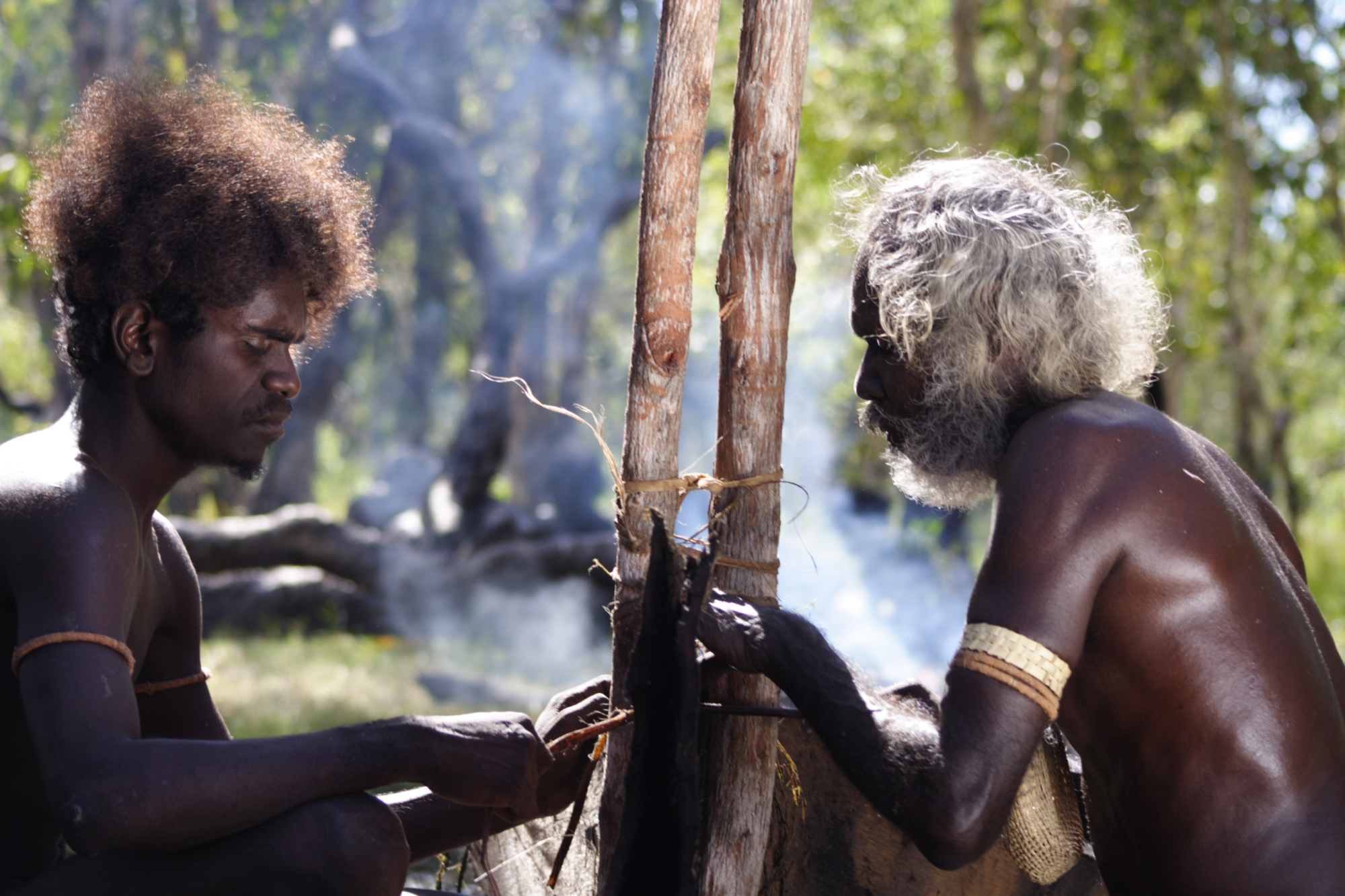The overwhelming theme of Australian feature films dealing with Aboriginal people has been the unhappy fate they have suffered at the hands of the European colonizer. There is something of a disjunction here with the ways in which other arts such as painting and literature have been able to show us the rich mythological systems which have underpinned Indigenous cultures. Film has perhaps been slow to sense the possibilities of moving beyond the emotional and the melodramatic, in which white liberal filmmakers can find easily digestible roles of victim and dignified resister for Aboriginal Australians.
This makes Rolf de Heer’s Ten Canoes (2005) such an important addition to Australian cinema. For better or worse, de Heer has always been drawn to the genuinely innovative in a national cinema which is too often conservatively theatrical.
Ten Canoes is drawn from the storytelling traditions of the Ramingining community in north-east Arnhem Land. The film was originally to have been co-directed by de Heer and David Gulpilil, born of their previous collaboration on The Tracker (2002). While Gulpilil dropped out of this role before filming commenced, his voice as narrator is still the central means by which the narrative is elaborated.
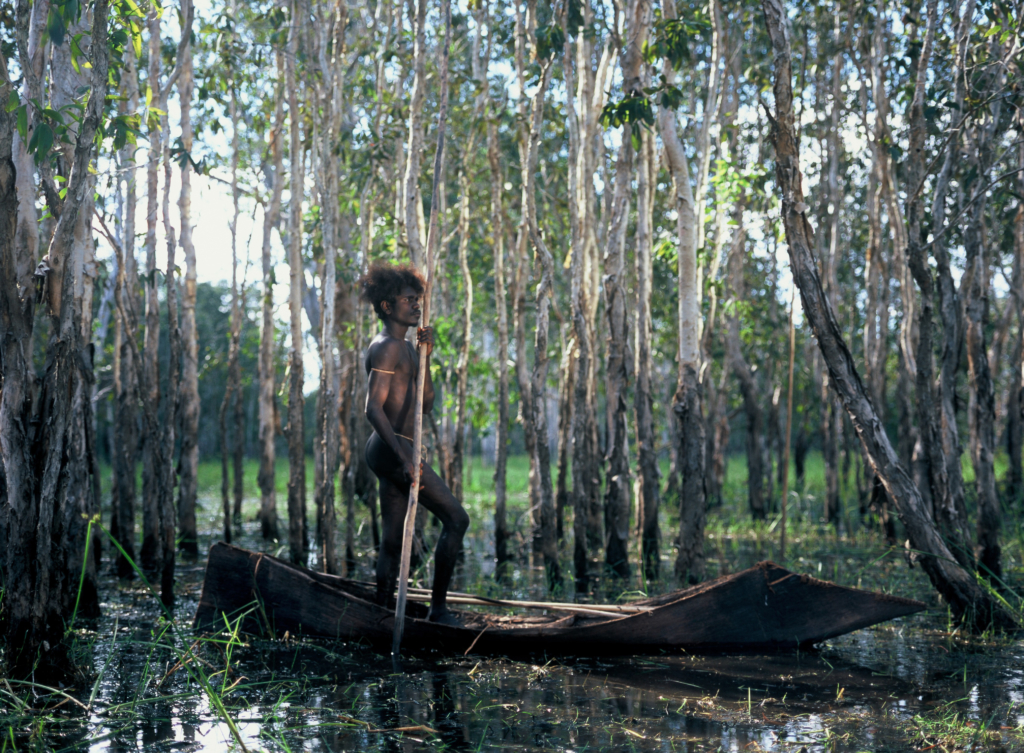
This is important given the very self-conscious stress the film places on storytelling. ‘Once upon a time, in a land far, far away …’ the voice-over begins before breaking up into laughter. The entertainment traditions of Western cinema are invoked so that we can be distanced from them. This is not a film in which storytelling is used as a means of entertaining us. It is explicitly concerned with the uses of narration as a means of teaching. For the characters in the film, narrative provides a tangible model of how to live within the law; for the film’s non-Indigenous audience, storytelling provides us with a readily accessible lesson in Indigenous culture.
The storyteller quickly pulls story from within story. Over introductory images of the Arafura wetlands, we hear a rather abstract story of the cosmology of the people and their link to the water goanna. We are then promised an elaboration of this story, with a story from the past in which an elder travels with his younger brother (David Gulpilil’s son, Jamie) on a journey to build canoes and gather goose eggs. The younger man is said to have his eye on one of his elder’s three wives. This, in turn, necessitates that the older man tell him yet another story, from a period even further back in time, which illustrates the issues involved in the regulation of kinship obligations within the social group.
Although the narrative moves backwards to a historical past and then to another past beyond that which has a more mythical, law-giving status, it is not concerned primarily with the creation myths of totemic animals (although this is invoked at the outset in Gulpilil’s narration). White Australia has always been keen to limit Aboriginal culture to a mystically contained set of creation stories, whereas the narration in this film points us to Aboriginal culture as the basis for an ongoing social system with firm yet fragile sets of rules and obligations.
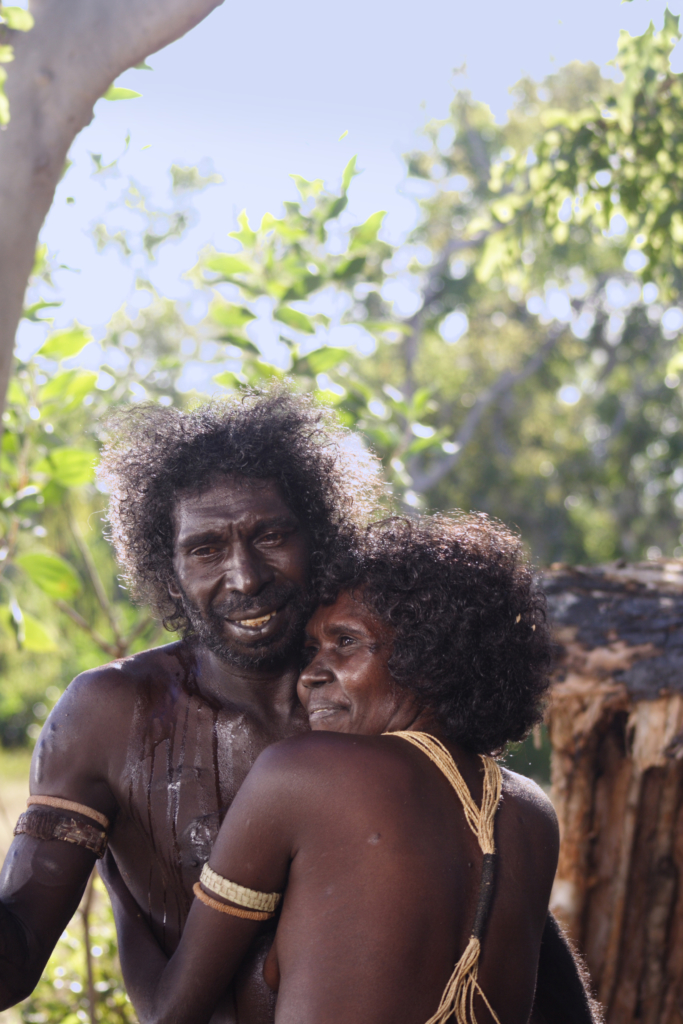
Within this story, there are embedded other small stories. A sorcerer from another group shows up, and we are shown representations of the men’s speculation on how his magic works. A woman disappears and we see different versions of the disappearance. This is no Rashomon-like assertion of the subjective nature of truth, but rather an affirmation of the power of imagination in making the world. In a world where so much is unknown, we are under an obligation to imagine the possible. The role of film in all this is that, like narrative, it makes concrete the abstract nature of reality. Perhaps this is one reason why visual imagery (and photography in particular) has such a volatile role in the politics of Indigenous belief systems in this country.
This is no Rashomon-like assertion of the subjective nature of truth, but rather an affirmation of the power of imagination in making the world
De Heer’s visual system is heavily structured around two different strategies. The most obvious is the alternation between the frame story, which is shot in contrasting black and white, and the story that it narrates, which stands out by comparison in the saturated colours of the wetlands. Within the black and white sequences, the camera tends to be still and retain a distance. Movement is generally through the frame. It is important to be conscious here of the way that de Heer lays stress on the 1930s photographs of anthropologist Donald Thomson as a source of inspiration for the film – an exhibition of these photos accompanied the premiere screenings of Ten Canoes at the Adelaide Arts Festival.
Contrasted with this is the rich colour and free-ranging camera of the narrated sequences. The two very different styles take on their meanings not from anything intrinsic to colour or movement, but from their opposition. The mobile camera enables longer takes rather than match-on-action cutting and works with the voiceover as a further energetic commentary on the action. The pre-historical past, the time of the ancestors, becomes a utopian space of enhanced vitality and possibility.
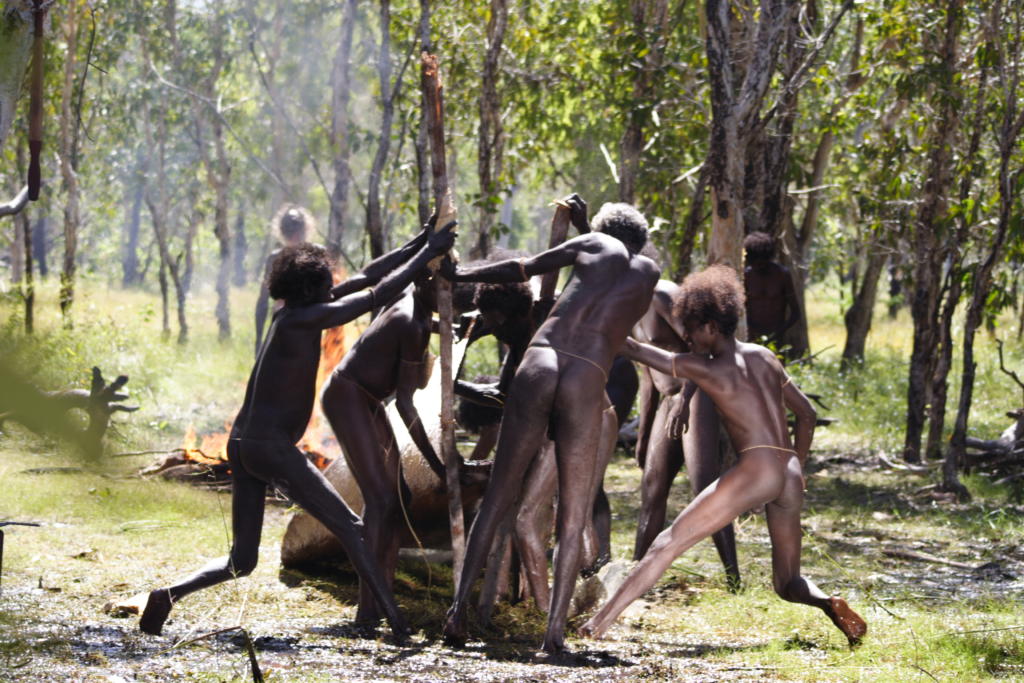
These stylistic choices are also an object lesson in thinking out ways to overcome obstacles. In a blessed relief from the actorly and dialogue-driven nature of too many Australian films, de Heer uses non-actors. While we’ve recently seen Ivan Sen’s Kuleshovian reliance on reaction shots in Beneath Clouds (2002) as a way of emotionalizing non-actorly performance, de Heer’s solution is more Bressonian. The voiceover narration often tells us things we can see quite well, but it imbues the images with the authority of the voice. It is important that we are being told these things, rather than suffering the illusion that we are simply discovering them by ourselves.
Narration emerges as an alternative means of organizing time. In place of a linear historical time, the model of narrative in Ten Canoes proposes a time that can be constantly revisited and reinhabited. The culminating moment in the frame story and the story within it comes with the repetition of a high-angle shot of men in canoes in what looks like a grassland, but is a swamp they are poling across. It is a moment in which time is recovered, when the local people from Ramingining recover the time of their ancestors and de Heer recovers the time of Donald Thomson.
The utopian aspect to the film is finally the ability to have a recoverable past, to see oneself in a continuous time. It is worth considering the idea that Australian filmmakers are also a disenfranchised people, with much of the poverty of the present moment stemming from the inability to imagine a historical lineage to image-making in this country.
The world of Ten Canoes is truly far, far away from most of us. The pixelly pleasure grounds of the multiplexes are probably closer to our imaginations now than the astonishing landscapes of north Australia, and the elaborate cosmological systems of the peoples who are among us yet whom we know so poorly. This is not a film which is going to make melodramatic emotional appeals to us, though it deals in very forthright ways with questions of what it means to live within the law. It is a meditation on ways to live, and more importantly, ways to die.
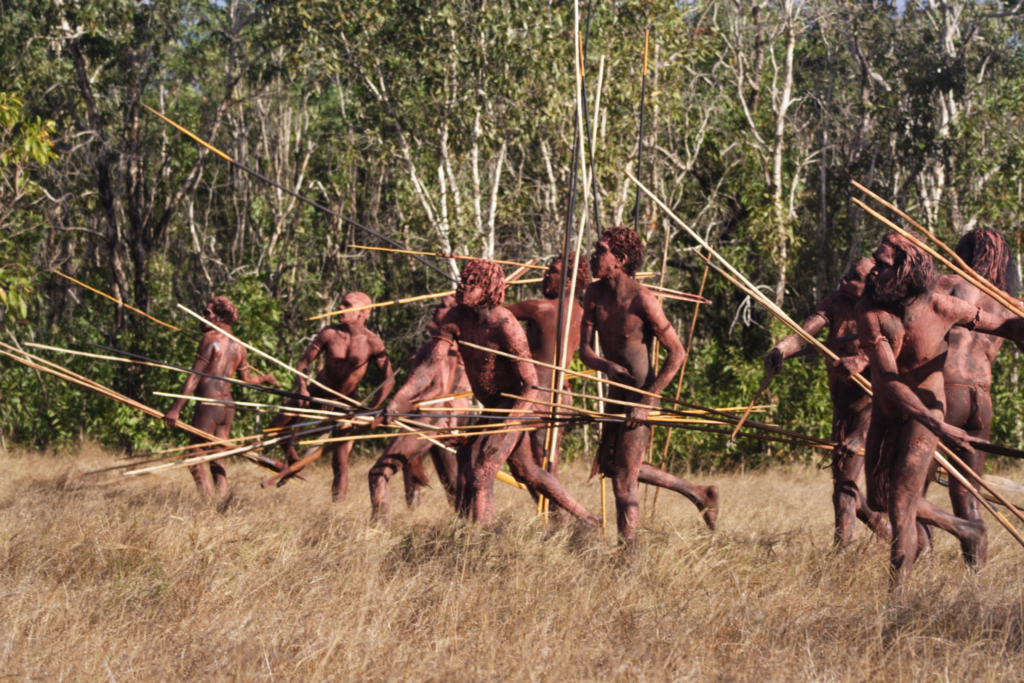
ROLF DE HEER AND TEN CANOES: CROCODILES, LEECHES, MOSQUITOES AND PASSION
Ten Canoes (2005) is Adelaide-based Rolf de Heer’s eleventh feature film since 1984. From Miles Davis in the Australian bush (Dingo,1991) to the bizarre fantasy of Bad Boy Bubby (1993) to the story of Heather Rose in 1997’s Dance Me to My Song, de Heer has amassed a body of work which is unified by its interest in turning to new subjects and new challenges. Ten Canoes grew out of de Heer’s association with David Gulpilil during The Tracker (2002). This interview took place at Adelaide Central Market in December 2005.
Mike Walsh: How did the idea for Ten Canoes originate?
Rolf de Heer: A long story. I was up in Ramingining, which is David Gulpilil’s homelands, before The Tracker. Even then he asked me to come up there to make a film. I saw him a number of times after The Tracker and every time I saw him, he would ask me to come up there and make a film. There was a window of opportunity, and we decided to make a film together.
We had talked about doing something about the massacres up there, some of which were quite recent – in the 1920s or 30s. The idea was to do an Indigenous story and just as it gets to its climax, everybody is wiped out. You never find out the end of the story. The morning before I left, David came in and said, ‘We need ten canoes.’ And I looked at him. He said, ‘We need ten canoes.’ I said, ‘Why do we need ten canoes? David, we don’t even know what the story is, let alone that we need ten canoes.’ He looked at me like I was a stupid white bloke and came back half an hour later with a battered plastic folder which he put in front of me. I took one look and said, ‘You’re right, we need ten canoes.’ It was this old Donald Thomson photograph which is central to the community up there, a wonderfully cinematic image of these ten canoes on the swamp. That’s how it became Ten Canoes.
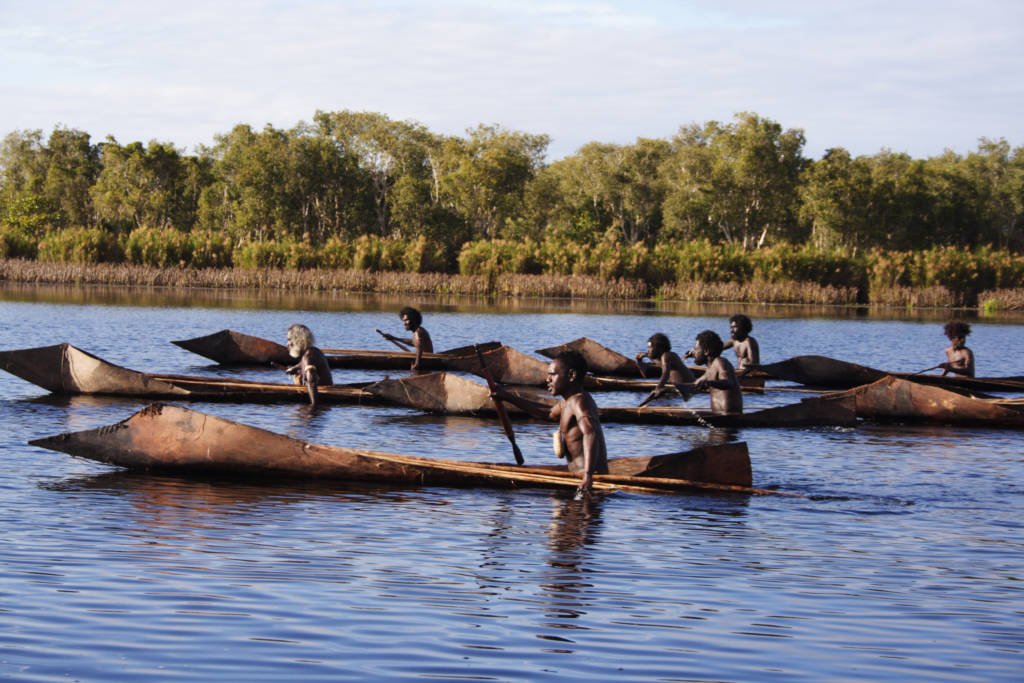
How did you develop the story from there?
I went up there pretty consistently, every month or six weeks for a couple of years. I did ethnographic research and worked with staff at the Museum of Victoria, which has the Donald Thomson collection, which is a great, great resource. There are about 4,000 Thomson photographs of that area, including a lot of stuff around the swamp. The main thing was talking to the community as much as I could. All along the way I’d say, ‘What about this? What about this?’ And that’s really how it worked. It was a slow process.
In an interview before the film was shot, you stressed how reliant you’d be on David Gulpilil. How did you adapt when he dropped out as co-director?
David pulled out about three or four weeks before the shoot for complex reasons. Suddenly I was not only without my lead cast, I was also without my co-director. By then David had not been living at the community for a year, and even prior to that when I went up there I would either not see him or barely see him, and so I had very good relationships by then with many other people in the community.
David’s loss took away our cosmological conduit. What I mean by that is that the cosmology up there is so different to our cosmology that you run into problems and you don’t know why you’re running into them. So there were aspects that were a struggle because David understands both cosmologies very well and he understands film, and he understands what we’re doing. He understands what is fiction and what is fact, whereas on the whole, the line between fiction and fact up there doesn’t exist in the way it does for us.
‘They knew they were bringing back their history, their deep history, and that meant more than anything else.’
– Rolf de Heer
However by then, because I had been coming back so often and because I had always done precisely what I said I was going to do – I had never let anybody down on anything – there was an immense trust. During the shoot I kept my word about everything, so even at times when there were a number of people who didn’t have a clue about what we were doing, and were being stretched well beyond anything they had ever done, they trusted me and so we just stumbled our way through it. They knew they were bringing back their history, their deep history, and that meant more than anything else.

This brings up the issue of how you addressed the situation of being a non-Aboriginal filmmaker telling a series of Aboriginal stories.
In a way it’s no different to doing Dance Me To My Song. You don’t need somebody with celebral palsy to direct that film. On that film we had a strong sense that we were attempting to be the means by which Heather could tell her story. There were also immense communication difficulties on that film, and Heather’s cosmology was also necessarily quite different to ours. So there was a lot that was the same here. The local community had a strong sense that we were the means by which they were telling their story. It wasn’t me telling my story, but rather being the mechanism, the mouthpiece, to allow them to tell their story.
It’s a very different way of working. Alexandra’s Project was something that I invented completely and I guided and nursed and I could make my own decisions about it, whereas with Dance Me To My Song and Ten Canoes all my decisions were tempered by what does Heather want, or in this case, what does the community want or what do I think they want, and do they want different things from me anyway? All the decisions are informed completely by those questions.
How did you cast your actors?
To a degree they cast themselves. For example, the ten canoeists in the Thomson photo have been identified and just about everyone up there is related to at least one of them in some way or another. So if someone was related to one of those canoeists, he simply said, ‘I have to be that one because he’s my grandfather.’ For the rest of it, it was a tricky process because the relationships depicted in the film had to be acceptable in the real-life kinship systems, which are highly complex. So sometimes you really had no choice. There is only one person who can play that role because there is no one else who is of the opposite moiety,[1]‘Moeties are clans of people, animals, plants and spirits. The skin name an Indigenous person is born with determines their moiety.’ From www.abc.net.au/message/dustechoes/glossary/moeity.htm and who is of the right subsection, who is of the right age. If there’s one person, that’s it – they play the role.
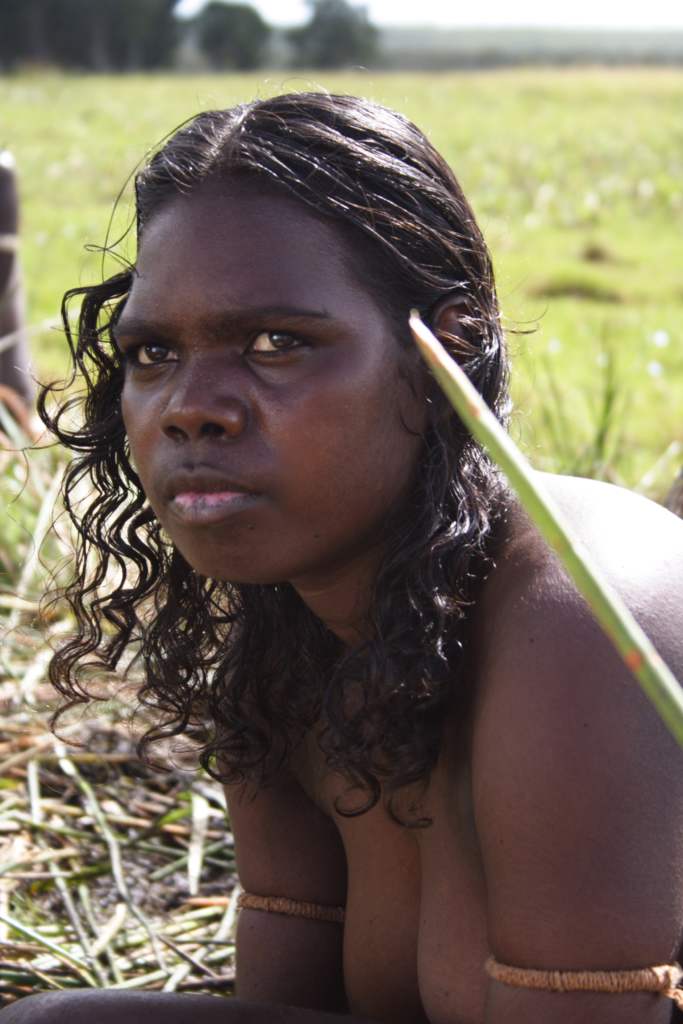
What techniques did you employ working with non-actors?
One doesn’t speak actors’ language, that’s really the only difference. You have different expectations and you set up the environment a different way. But for the rest, it’s not so different. It’s slower, you have to be more careful, you’ve got to explain many more things, and then there was the language barrier as well. There’s no definitive answer. It’s just a different thing. You can order actors around like they are in a play, but these are people who are living their story.
Was the decision to alternate colour and black and white sequences part of your initial design for the film?
It’s what we got to, though the process of getting there was quite complicated. Thomson’s ten canoes photo was central to things and I understood that what the community wanted was to re-create in some ways the goose-egg gathering because they knew it existed back then, and they hadn’t done it in a formal way for a long time. There hadn’t been any canoes like that for decades, but they’d been talking for years about getting that going again. Here was an opportunity to do it.
Now, that’s not very dramatic. When I talked about drama, they were clear about wanting it set in old times, but they had come to idealize the old times to such a degree that nothing bad ever happened back then. So I’d say, ‘Can we have this?’ and they’d say, ‘No, we can’t have someone killing someone, we can’t have jealousy in our culture back then.’ I felt that it was going to be this weird reconstructed documentary with shots of happy natives gathering – and that’s what they thought they wanted in a way. My job was to make a film that satisfied them but one of the things they wanted was for the film to be seen widely, so of course it had to work for a Western audience. I hit upon the idea of setting an aspect of it in the mythical times, because in the mythical times anything was allowed to happen.
Another aspect of it was that the Thomson photographs are black and white and they are very powerful, very much a part of their history, their new history. I looked at them wistfully and thought, ‘Wouldn’t it be fantastic, but I can’t shoot this film in black and white, because it’s not what people are expecting, it’s not what I’m contracted to do, and it will limit its audience.’ So I started to work out how to do it all: have the non-dramatic goose-egg gathering, have the black and white, have the colour, have the dramatic conflict that I needed, by it being a goose-egg gathering expedition in black and white set seven or eight hundred years ago, not only before any contact with white people but also before any contact with Macassans. It’s too difficult to explain Macassan stuff because Macassans were coming for centuries before white people ever came. They introduced quite a lot of other culture, like steel and clothes. When Thomson got there in the 1930s there were bits and pieces of clothing that people were wearing which dated back to the Macassan times.
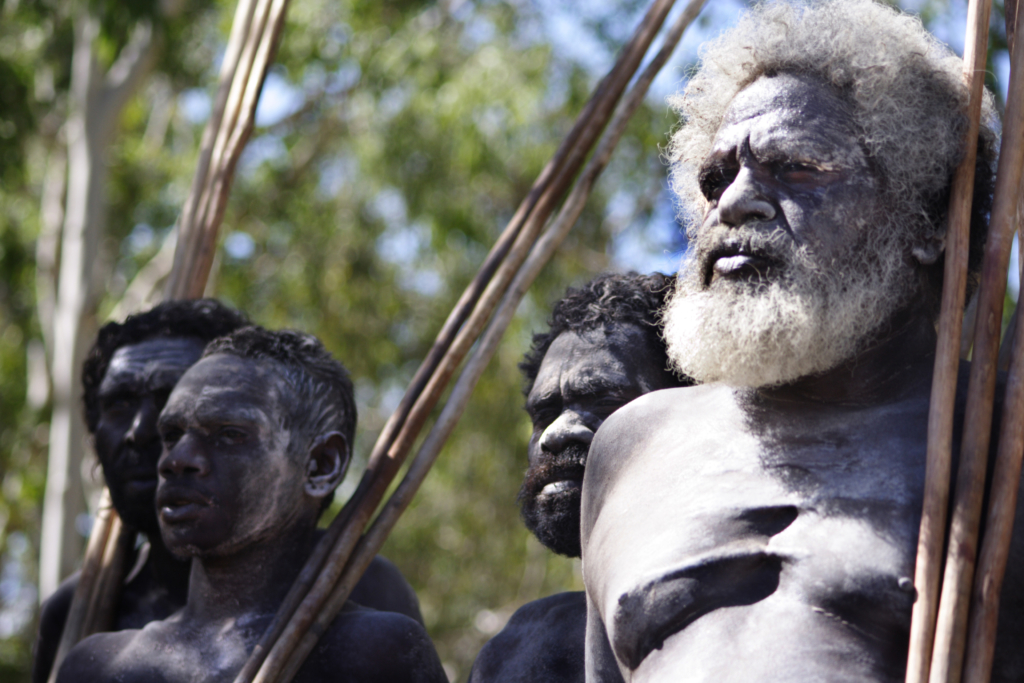
You’ve adopted very different visual styles for the two time periods. The black and white material tends to have a static camera with movement through the frame …
Very formal, to reflect the Thomson shots.
The colour sequences, on the other hand, have a very free-ranging camera.
This was worked out beforehand. You usually shoot coverage and have to repeat action otherwise it doesn’t cut together, but I thought that because no one had acted before I wasn’t going to ask them to repeat action. The goose-egg hunt was shot in long takes too, but to differentiate the mythical material we kept it moving all the time. I’ve had a lot of success in difficult situations shooting with a Steadicam. You don’t have a dolly, you don’t have all the palaver that comes with that. You’ve got a mobile camera in a remote location that you can do extraordinary things with. Almost every colour shot, apart from a few formal portraits, was done on a Steadicam, which enabled us to create two distinct visual styles. You’ve got to sit back and look at it to work it out because it fits quite comfortably.
Did Levi-Strauss’s ideas on binary oppositions as an underlying force in myth have any influence on you here?
I’ve read some Levi-Strauss some years ago so I can’t say no with absolute certainty. That’s not the way I work anyway. There’s formal education and formal knowledge in my background, there’s the ability to analyse and intellectualize but that’s not what I do when I make a film. I go so much by feel and if people afterwards point out what the intellectual things are, I sometimes think, ‘Yes, that’s right too, that’s true. I hadn’t thought of that.’
Formalizing the black and white stuff was logical to me because we were working with the compositions of the Thomson shots, as that was the movie’s own pre-history in a way. When we were shooting on the swamp, which was astonishingly difficult, I knew to climb a tree to get that shot because I knew Thomson had climbed a tree to get that shot. I didn’t know how we were going to get the camera to that tree in the middle of a swamp, but I knew it was a lot easier to just have a camera up a tree than to try to move the shot.
Interestingly enough, in the segment of the tree platforms, we had a colour shot to do as well as the black and white. The trees were more than three feet deep in water with crocodiles and leeches and mosquitoes and the most difficult things imaginable. We got the fixed camera up there with ladders, but then we had a colour shot and we thought, ‘What are we going to do here? We should be moving the camera.’ We set the ladder up in a dinghy to get it up high, then pushed the dinghy forward like a dolly.
These decisions were made by feel for a combination of aesthetic and practical reasons. With the movement I knew I could structure things so that if there were problems in one area I could do it in a different way. If I wasn’t getting a bit of dialogue or a performance wasn’t working, I could move the camera to something else that was happening and put the dialogue in afterwards. So it was designed both for the aesthetic and the practical.
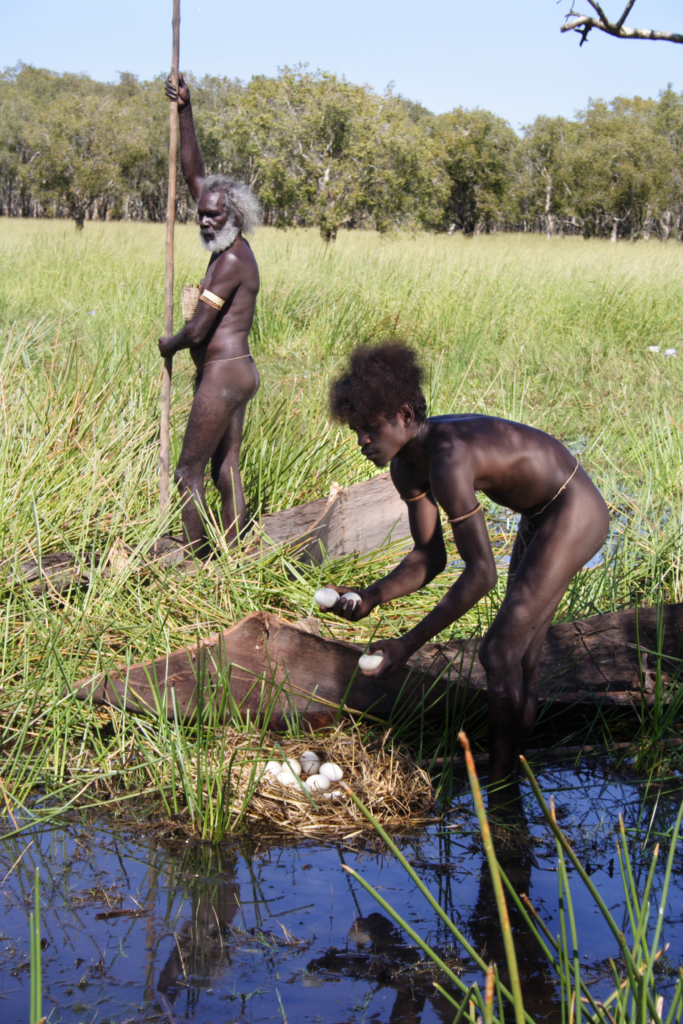
The David Gulpilil voiceover sometimes explains, but sometimes simply recounts things we can already see. There seems to be an importance in the telling?
The way of storytelling that they have is different to our storytelling, and it really was a question of trying to combine these two. I wanted to make something and they wanted to make something that was authentic to them, and mostly from their point of view. That was okay without it being articulated, but I understood also that it had to work in a Western storytelling tradition. It had to combine the two. If there was one big issue for me all the time, it was how best to fuse the two things so that it’s authentic to them but it works for us.
Can you articulate how the storytelling techniques are different?
Not completely because I’m not an expert. By osmosis I’ve consumed a bit of it and I regurgitate it in some mysterious way. For example, there’s a tremendous amount of repetition that has significance I don’t quite understand, but it’s a kind of cascading repetition. For example: ‘See that man there, see that man sitting on a rock. Now, that man on that rock, he’s thinking. He’s sitting on that rock and he’s thinking about something. That man, see him, thinking about …’ There might be three concepts in a sentence, and the next sentence repeats those concepts and adds a new one. One of the original concepts might get dropped off and another one put in, but the others are always repeated, sometimes in a different order, and sometimes with a slightly different or elaborated meaning.
It’s a painful way of storytelling. They’ll talk about something that’s really obvious that we would never say because it’s not part of the story. You feel that you know that, or that you don’t need to know that for the story but the language works so differently, the language is all about context and so context is emphasized and by stating something that’s obvious for everyone to see, you’re giving it a contextual emphasis.
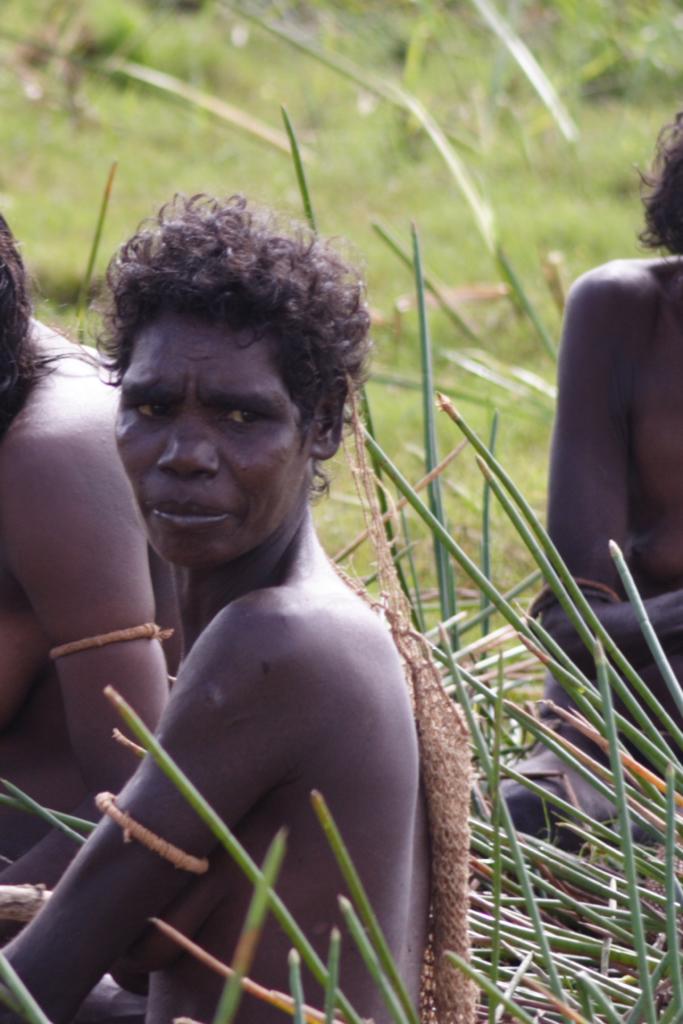
How did you arrive at the specific language of the voiceover?
There are two languages for it in the film. We’ve done it in Mandalpingu language and also in English. There was a lot of thinking about that because at the start we thought if there was going to be any storytelling, it would be in language. But if it’s going to be in language, then for all but 2000 people, you’ll get little chance to really see the film for what it is. An English-language narrated version will play to a much broader audience. It preserves the spoken language in the dialogue, because they are very keen on their language and I wouldn’t want to interfere with that by dubbing.
The final creation is something that will play like that probably all over the world. I’ve already had a discussion with the Italian distributor about how to present it because in Italy they normally dub everything and I said, ‘No, they cannot dub the dialogue. The actors don’t give permission.’ But if we force them to put out a completely subtitled version, it really marginalizes it to small arthouses. What you do is get a good Italian storyteller, one with a third world accent of some sort (because clearly we’re not going to find someone who speaks fluent Italian with an Australian indigenous accent, nor would anybody in Italy recognize it as an Australian Indigenous accent) an African-language accent for example, and you have the storyteller tell that story in that way, then you have an Italian version that would play more broadly, while it still preserves their cultural desire to have their language heard and known.
Earlier you made the analogy to Dance Me To My Song and I wonder if you see yourself as a filmmaker who is drawn to imagining the experiences of people who are radically different from yourself?
No, not particularly. Unless I’m passionate about what I’m doing it’s really uninteresting to make a film because it’s incredibly hard work. People can rush out to make films to make money, which I’m not interested in, or for their ego, which I’m not interested in. I make a film because it gives me a really interesting experience. If I make the same film again, if I make Ten Canoes 2, it’s not going to be very interesting to do, because I would simply be repeating what I’ve done before. I’m drawn inevitably to something that is quite different to what I’ve done before.
That leads me to films like Ten Canoes and Dance Me To My Song, which are completely different from each other. As I’ve said, I’m not Indigenous, and nor am I afflicted by cerebral palsy, but that doesn’t mean it’s not right for me to make a film about those things. It’s my job to describe the being of whatever it is that I’m dealing with. The thing that I enjoy about cinema is being taken into another world, having an experience that I don’t already have in everyday life.
Endnotes
| 1 | ‘Moeties are clans of people, animals, plants and spirits. The skin name an Indigenous person is born with determines their moiety.’ From www.abc.net.au/message/dustechoes/glossary/moeity.htm |
|---|
